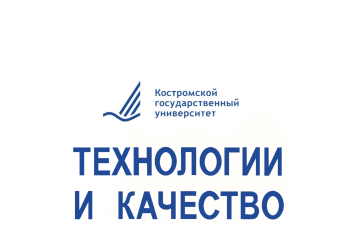- 3
- MATHEMATICAL MODEL OF THE INTERACTION OF LOW-ENERGY INERT GAS IONS WITH POLYPROPYLENE IN RADIO-FREQUENCY PLASMA OF LOW PRESSURE
- Timoshina Y. A., Voznesensky E. F., Zheltukhin V. S. Mathematical model of the interaction of low- energy inert gas ions with polypropylene in radio-frequency plasma of low pressure. Technologies & Quality. 2021. No 3(53). P. 18–23. (In Russ.) https://doi.org/10.34216/2587-6147-2021-3-53-18-23.
- DOI: https://doi.org/10.34216/2587-6147-2021-3-53-18-23
- УДК: 533.924: 677.494
- Publish date: 2021-08-18
- Annotation: Results of the molecular dynamic simulation of the interaction of low-energy ions (from 10 to 100 eV) with the surface of polypropylene fibrous materials in low pressure radio-frequency (RF) argon plasma is presented. A full-atomic model using the LAMMPS classical molecular dynamics code was made. As a result of numerical calculations, it was found that argon ion bombardment initiates the breaking both of an intermolecular and intramolecular bond of polypropylene with sputtered particles being the hydrocarbon radicals and single atoms. The depth of implantation of the ion is determined, the change in the kinetic energy of the argon atom and the temperature of the simulated cell is obtained.
- Keywords: molecular dynamics, radio-frequency discharge, ion bombardment, kinetic energy, plasma, argon, polypropylene
- Literature list: 1. Sergeeva E. A., Zheltuhin V. S., Abdullin I. Sh. Modification of synthetic fibrous materials and products by non-equilibrium low-temperature plasma. In 2 p. Part 1. Theory, models, methods*. Kazan, KSTU, 2011. 252 p. (in Russ.) 2. Abdullin I. Sh., Zheltuhin V. S., Kashapov N. F. High-frequency plasma jetting of materials at reduced pressures: Theory and practice of application.* Kazan, KSTU, 2000. 348 p. (in Russ.) 6 3. Raiser Yu. P., Schneider M. N., Yatsenko N.A. Radio-frequency capacitively coupled discharge: Physics. Experimental technique. Applications*. Moscow, Nauka Publ., Fizmatlit, MIPT Publishing House; 1995. 310 p. (in Russ.) 4. Kutepov A. M., Zaharov A. G., Maksimov A. I., Titov V. A. Plasma modification of textile materials: prospects and problems. Rossijskij himicheskij zhurnal [Russian chemical journal]. 2002;46,1:103–115. (in Russ.) 5. Gilman A. B. Low-temperature plasma treatment as an effective method for surface modification of polymeric materials. Himiya vysokih energij [High Energy Chemistry]. 2003;37,1:17–23. (in Russ.) 6. Maksimov A. I. Nikiforov A. Yu. Low-temperature plasma treatment as an effective method for surface modification of polymeric materials. Himiya vysokih energij [High Energy Chemistry]. 2007;41,6:454–459. (in Russ.) 7. Sharnina L. V. Low-temperature plasma as the basis for creation of modern textile chemical technologies. Fibre Chemistry. 2004;36,6:431–436. 8. Sergeeva E. A., Ilyushina S. V. Influence of low-temperature plasma on the physical and mechanical properties of high-modulus polyethylene fibers. Izvestiya vysshih uchebnyh zavedenij. Tekhnologiya legkoj promyshlennosti [Proceedings of higher educational institutions. Light industry technology]. 2011;12,2:14–16. (in Russ.) 9. Fazylova D. I., Zenitova L. A., Shtejnberg E. M., Abdullin I. Sh. Study of the effect of plasma-forming gas on the structure of textile fibers. Vestnik Kazanskogo tekhnologicheskogo universiteta [Kazan Technological University Bulletin]. 2011;16:52–57. (in Russ.) 10. Azanova A. A. Plasma modification of knitted fabrics. Dizajn. Materialy. Tekhnologiya [Design. Materials. Technologyъ. 2013;2(27):86–88. (in Russ.) 11. Hammatova V. V. Investigation of the physical and mechanical characteristics of textile materials after exposure to an RFC-discharge plasma. Izvestiya Vysshikh Uchebnykh Zavedenii. Seriya Teknologiya Tekstil'noi Promyshlennosti [Textile Industry Technology (Series Proceedings of Higher Educational Institutions)]. 2005;1(282):22–25. (in Russ.) 12. Sergeeva E. A., Korneeva N. V., Zenitova L. A., Abdullin I. Sh. Modification of synthetic fibrous materials and products by non-equilibrium low-temperature plasma. Properties, structure, technology*. Kazan, KSTU, 2011. 255 p. (in Russ.) 13. Timoshina Y. A. Influence of HF plasma of reduced pressure on the hygroscopic properties of synthetic fibrous materials. Dizajn. Materialy. Tekhnologiya [Design. Materials. Technology]. 2021;3:78–80. (in Russ.) 14. Timoshina Y. A. Influence of the molecular structure of fiber-forming polymers on the effects of highfrequency plasma modification of synthetic fibers. Izvestiya vysshih uchebnyh zavedenij. Tekhnologiya legkoj promyshlennosti [Proceedings of higher educational institutions. Light industry technology]. 2020;4:51–54. (In Russ.) 15. Rapaport D. K. The art of molecular dynamics*. Izhevsk, RHD, 2012. 632 p. (in Russ.) 16. Tager A. A. Physicochemistry of polymers*. Moscow, Scientific world, 2007. 576 p. (in Russ.) 17. Santangelo P. G., Ngai K. L., Roland C. M. Temperature Dependence of Relaxation in Polypropylene and Poly(ethylene-co-propylene). Macromolecules. 1996;29:3651–3653. 18. Plimpton S. Fast Parallel Algorithms for Short-Range Molecular Dynamics. Journal of Computational Physics. 1995;117,1:1–19. 19. LAMMPS Molecular Dynamics Simulator. URL: http://lammps.sandia.gov. 20. O’Connor T. C., Andzelm J., Robbins M. O. AIREBO-M: A reactive model for hydrocarbons at extreme pressures. The Journal of Chemical Physics. 2015;142:024903. 21. Rozas R., Kraska T. Molecular Dynamics Simulation of Heterogeneous Nucleation and Growth of Argon at Polyethylene Films. Journal of Physical Chemistry. 2007;111,43:15784–15791. 22. Sumpter B. G., Noid D. W., Wunderlich B. Atomistic dynamics of macromolecular crystals. Macromolecules. 1992;25,26:7247–7255.



